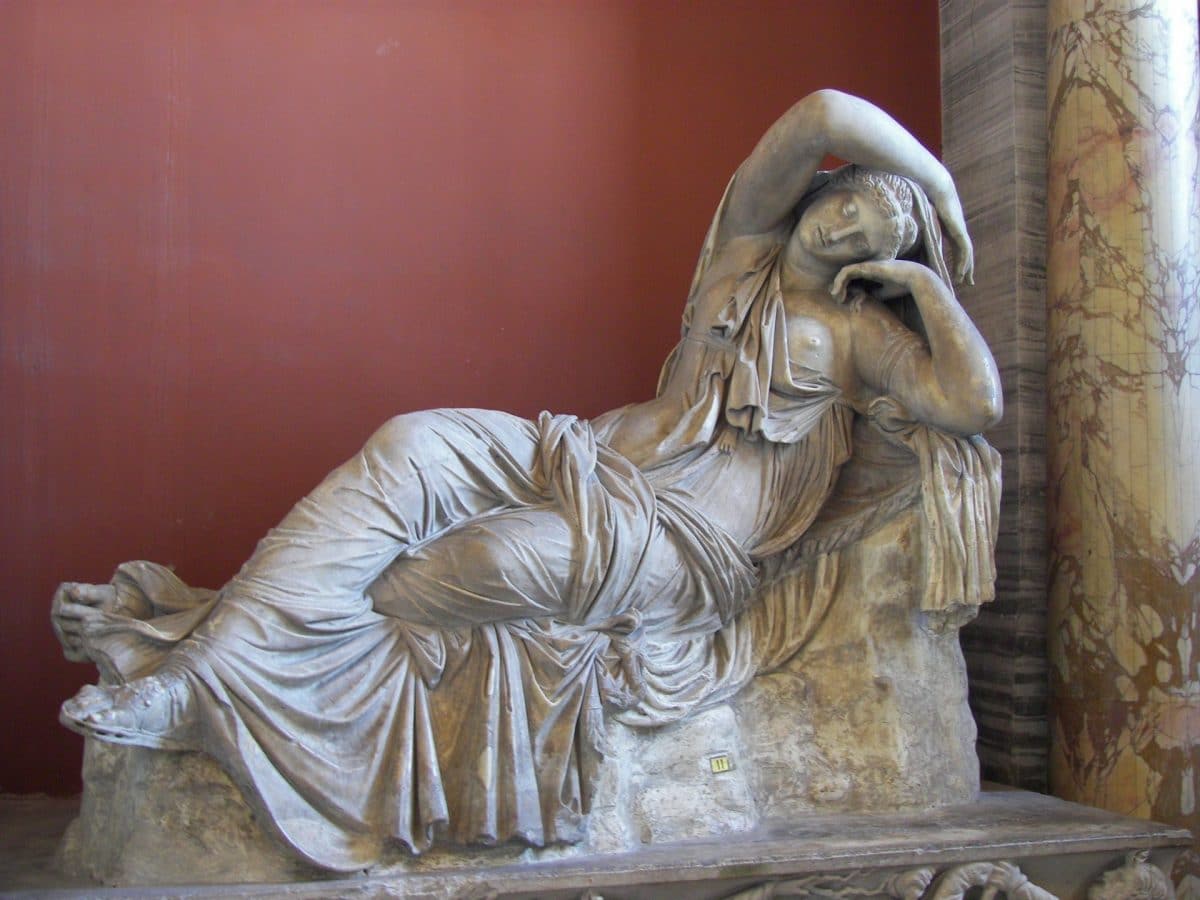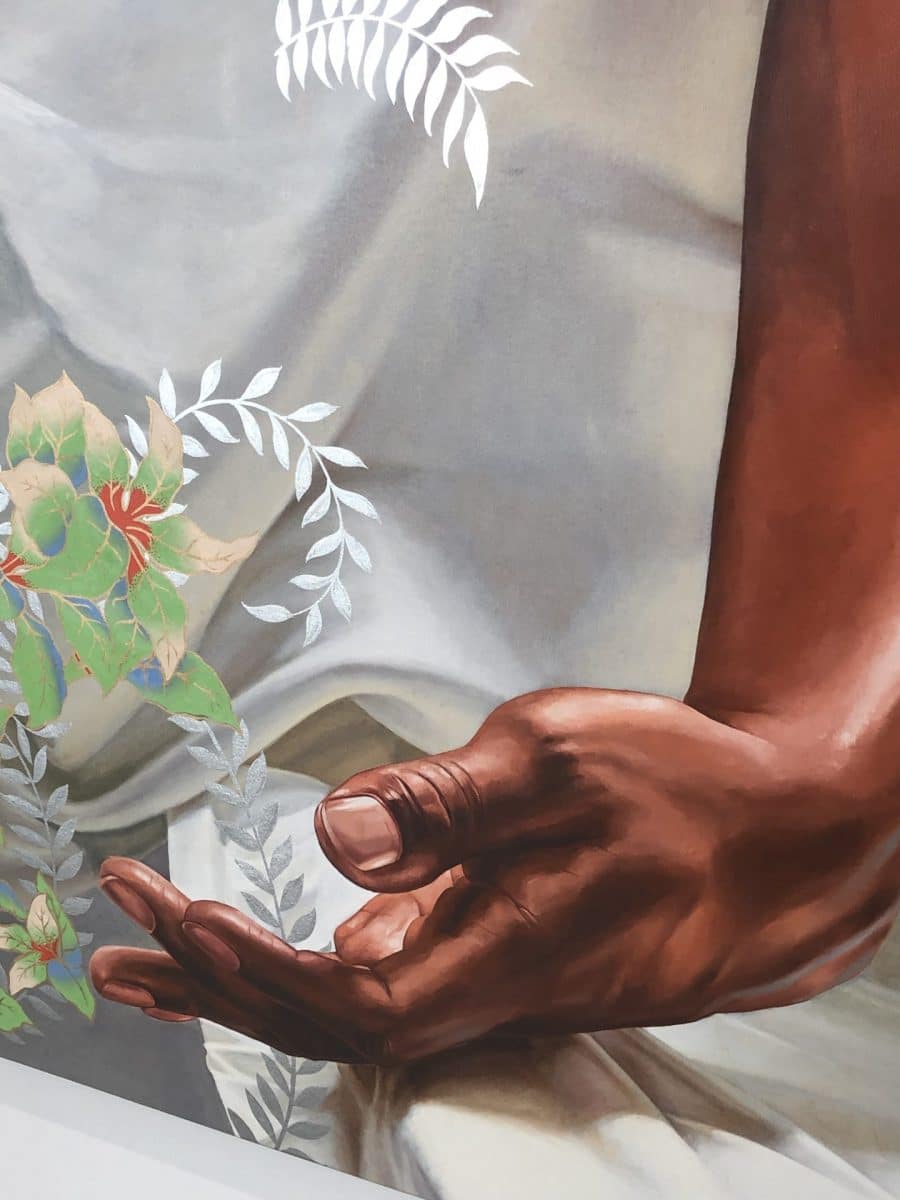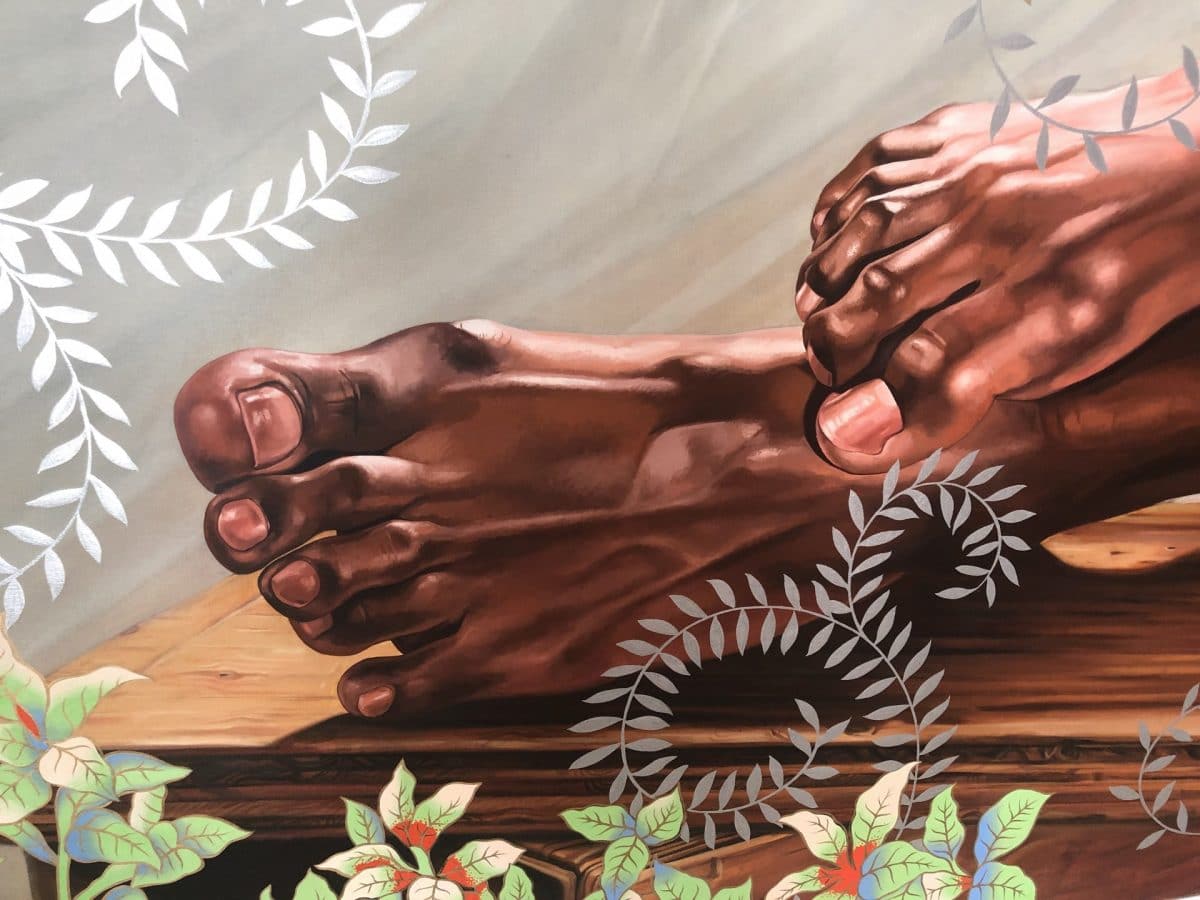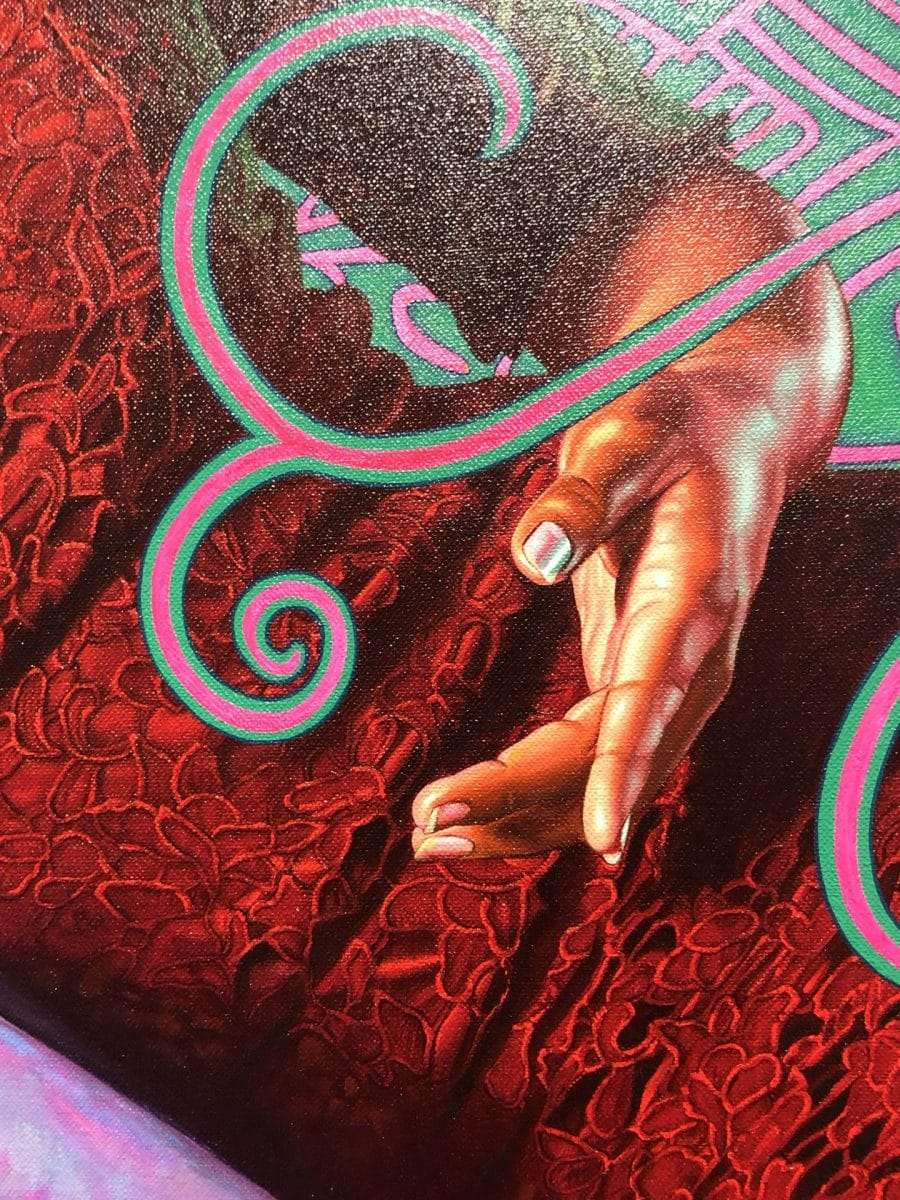Kehinde Wiley at the Rubell Museum
While I have a longer post on the renovated Rubell Museum in Miami coming, I wanted to get this post up first. I believe that Kehinde Wiley’s masterpiece Sleep (2008, oil on canvas) deserves its own post.

This piece took my breath away. Its size, the composition and the execution are all magnificent.
With Sleep, Wiley continues his tradition of depicting black men and women in classical poses with flat yet ornately decorated backgrounds. This piece draws from many different aspects of art history for its composition.

The ways in which he depicts the luminous nature of the skin and the natural folds of the white fabric are spectacular. An idealized version of man, the piece is beautiful to behold and also left me with many questions, wanting to delve deeper into the work.
Beyond the “how did he do that?” and “I wonder how long this took!” I also was left with practical questions about the subject, such as “If this is ‘sleep‘, how on earth could this person actually be comfortable?” and “What exactly is this person wearing: Is that the sheet from their bed or their clothing?” and “What’s happening here? Is he falling off the bed?”
Depictions of Sleep in Art
While the questions above are posed tongue-in-cheek there are innumerable examples in the art world of uncomfortable sleep positions. Wiley’s work is a perfect example of how the artist is simply following in a tradition of making art depicting people sleeping in odd positions (and at least Wiley’s model’s arms are at rest)

The question of whether we are viewing a man asleep or something else (e.g. the age old “sleep versus death” question) also continuously plagues the world of art and literature and can be raised here as well.
Wiley’s Figure as Christ
One cannot help but see a Christ-like figure in Wiley’s work. From a funerary-like white draping of cloth, to a wooden “plank” beneath the subject’s feet (clearly not the floor as we can see the edges), subtle references can draw viewers to the question of whether we should see this individual as a sort of “Messiah”. The position of his feet, stacked on top of one another also evoke how Jesus’ feet were supposedly nailed to the cross.


Yet, even in these details we are made to understand that this is not an image of Jesus – the nail holes from the crucifixion are not present, the man is not presented as a saint and his pallor is healthy and vital. In this work Wiley evokes the Pieta and other pieces of artwork of the crucified Christ as classical imagery, combined with his own creativity to create something completely new.
Wiley’s Background as an Integral Feature
Beyond the figure at the center of the piece, the background also plays an important role in Wiley’s pieces. The artist allows the decoration to be both behind the figure and in front of him. It seems to be slowly encroaching on the figure, almost as if the vines were enclosing on this male version of “Sleeping Beauty.” Again, in this reference we find an evocation of medieval and renaissance themes in his artwork and subject matter, but all brought together in a piece that feels ambitious and modern.


A Few More Kehinde Wiley Paintings
I’ll leave you with Kehinde Wiley’s work from Art Basel, which I also loved. The detail in both these pieces, such as placement of the hands in classical gestures, and the modern clothing were perfect counterpoints to each other.




Christine, you really made this art come alive with your descriptions, questions and appreciation for the level of detail Kehinde Wiley created! Thank you!!
Thank you!
Thank you so much christine for illuminating this magnificent piece of art! I can’t believe I’m the only one here in the gallery looking at it – it feelslike a spiritual experience.